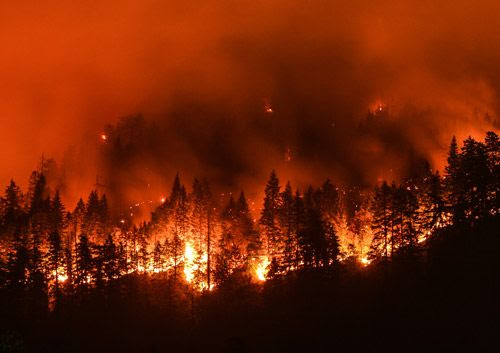|
|
|
National Integrated Drought Information System
|
|
Pacific Northwest Drought Early Warning System June Drought & Climate Outlook Webinar
Monday, June 27, 2022 at 11 am - 12 pm PT
|
|
According to the June 7, 2022 U.S. Drought Monitor, 53.2% of the Pacific Northwest Drought Early Warning System (DEWS)
is in drought, with 17.8% of the region in Extreme/Exceptional Drought (D3/D4). On a positive note, this is down from just over 75% of the region in drought at the beginning of 2022. Much of the region has been getting steady precipitation along with cool
temperatures during this time. However, parts of southern OR and ID have missed out on much of the moisture, as has been the case for many years now. This webinar will provide more information on the current conditions and outlooks, as well as a presentation
on a new NIDIS-funded study from the Montana Climate Office on "Drought assessment has been outpaced by climate change: empirical arguments for a paradigm shift."
These webinars provide the region's stakeholders and interested parties with timely information on current and developing
drought conditions, as well as climatic events like El Niño and La Niña. Speakers will also discuss the impacts of these conditions on things such as wildfires, floods, disruption to water supply and ecosystems, as well as impacts to affected industries like agriculture,
tourism, and public health.
|
|
Featured Presentations
Climate Recap & Current Conditions
Karin Bumbaco | Office of the Washington State Climatologist
Seasonal Conditions & Climate Outlook
Joe Casola | NOAA
NCEI Western Regional Climate Services Director
Drought Assessment Has Been Outpaced by Climate Change: Empirical Arguments for a Paradigm Shift
Zach Hoylman | Montana Climate Office
|
|
Other News & Upcoming Events
|
|
New NIDIS-Funded Study Examines How Drought Assessment Has Been Outpaced by Climate Change
|
|
|
|
The reference period chosen to define meteorological drought can have a profound impact on the determination of apparent spatial extent and duration of drought
events. A new NIDIS-funded study led by the Montana Climate Office found that climate change shifts the baseline for what should be considered “normal” hydrological conditions, therefore shifting the definition of anomalous aridity, or “drought.” The study
found that, generally, 30 years of data is adequate for characterizing a statistical climatology. In regions where aridification is occurring (such as the southwestern United States), current conditions are not exceptional; they are more of the status quo.
Conversely, regions that are becoming wetter (such as the northwestern United States) have a wet bias in drought assessment with longer reference periods.
Learn
more
>
|
|
|
|
|
Water Year 2022 Snow Drought Wrap-Up
|
|
|
|
The 2021–2022 snow season has been a series of ups and downs. By early January, the dry start to the snow season was all but forgotten as snow accumulation and
snow water equivalent (SWE) increased rapidly and the snowpack was well above normal. However, a long, and record-breaking in some cases, dry stretch followed the heavy December snows. Snow has mostly disappeared at SNOTEL sites in California, Nevada, Utah,
Arizona, and New Mexico with the exception of a few high-elevation locations. In the Pacific Northwest and Northern Rockies, snowpack remains at many sites, and SWE is above normal for this time of year due to persistent cool and wet conditions during April
and May that caused a late SWE peak and slowed the snowmelt. Learn
more >
|
|
|
|
|
Scientists Develop Method for Seasonal Prediction of Western Wildfires
|
|
|
|
This summer’s western wildfire season is likely to be more severe than average but not as devastating as last year’s near-record, according to an experimental
prediction method developed by scientists at the National Center for Atmospheric Research (NCAR). The new method, detailed in a peer-reviewed
NIDIS-funded study, analyzes precipitation, temperatures, drought, and other climate conditions in the winter and spring in order to predict the extent of wildfires
across the western United States during the following summer. The research team developed the method by applying machine learning techniques to observations of every wildfire season since 1984, when current satellite measurements of fires first became available.
Although scientists had previously known that climate conditions during the spring and summer influence fire risk, the new study demonstrates that, even several months before peak fire season, the climate across large parts of the West plays an important role
in setting the stage for the blazes. Learn
more >
|
|
|






